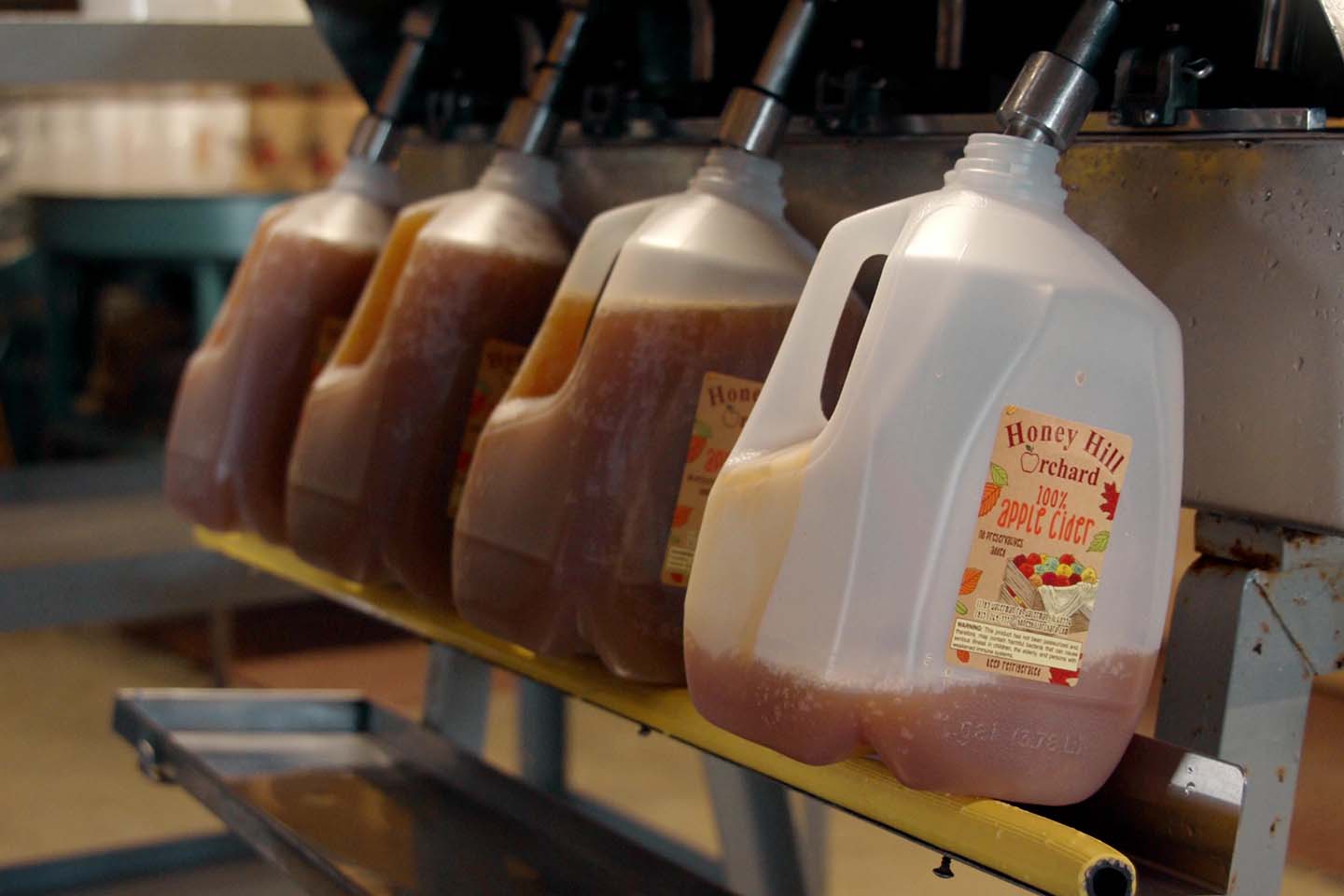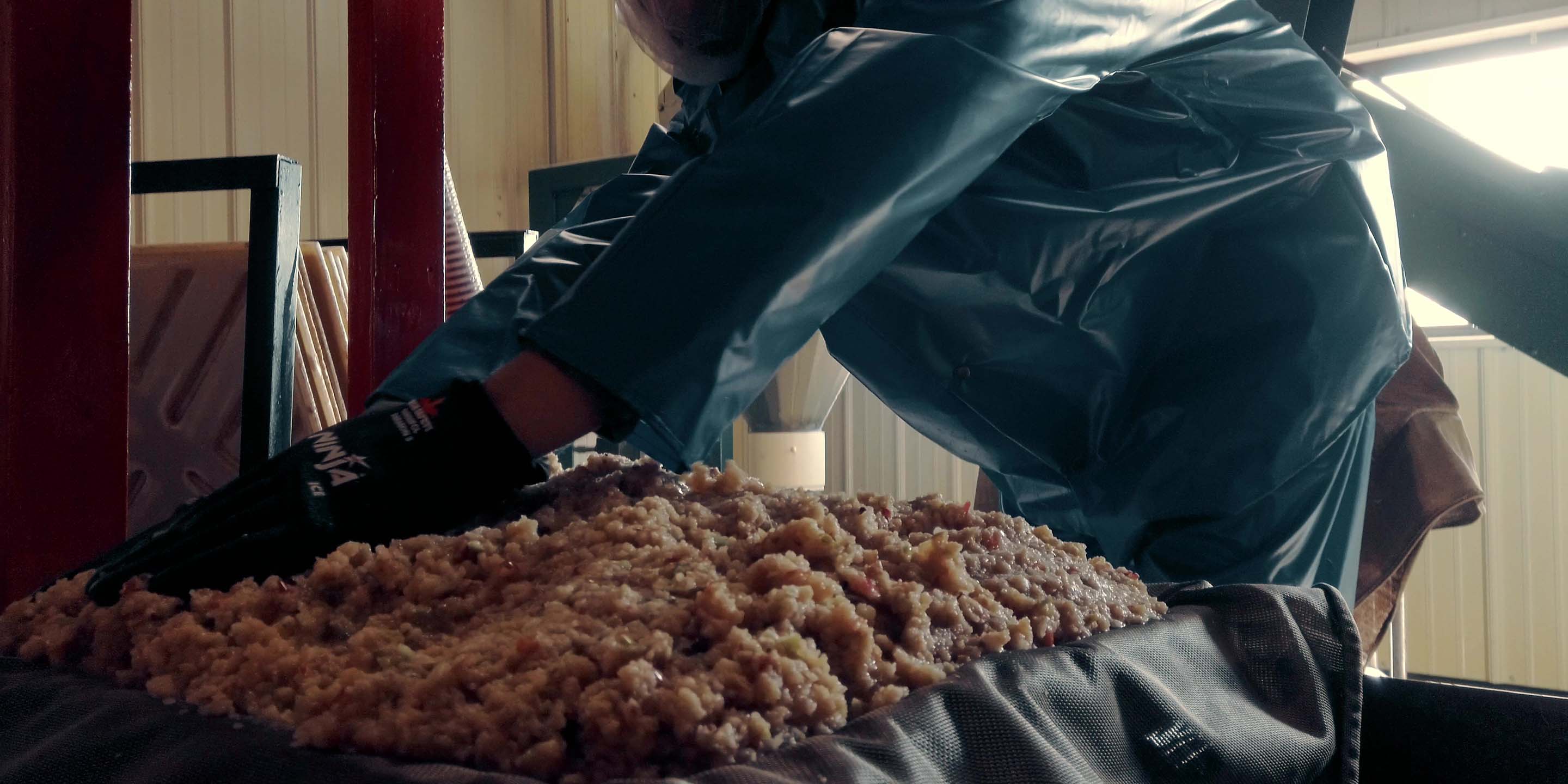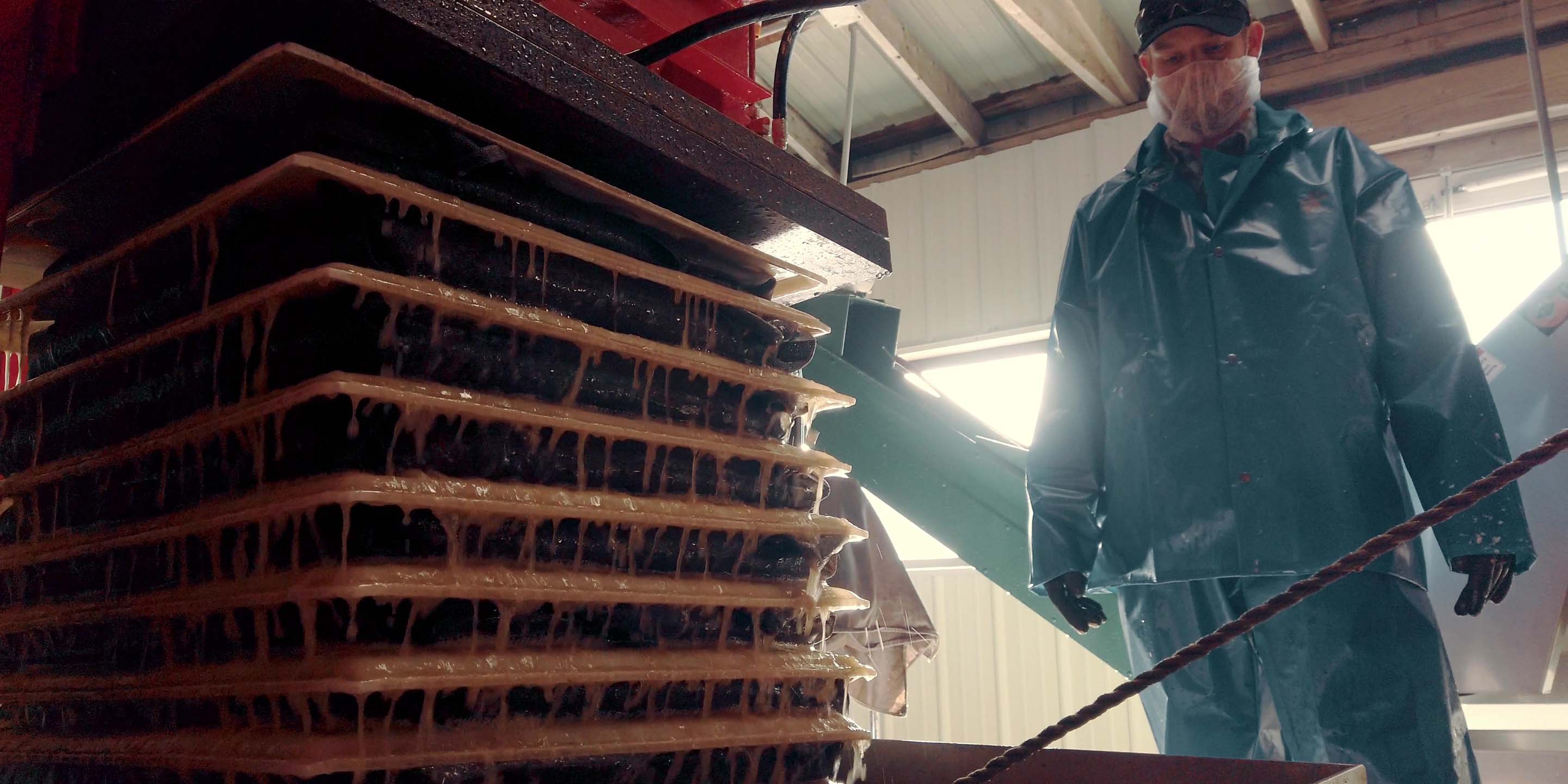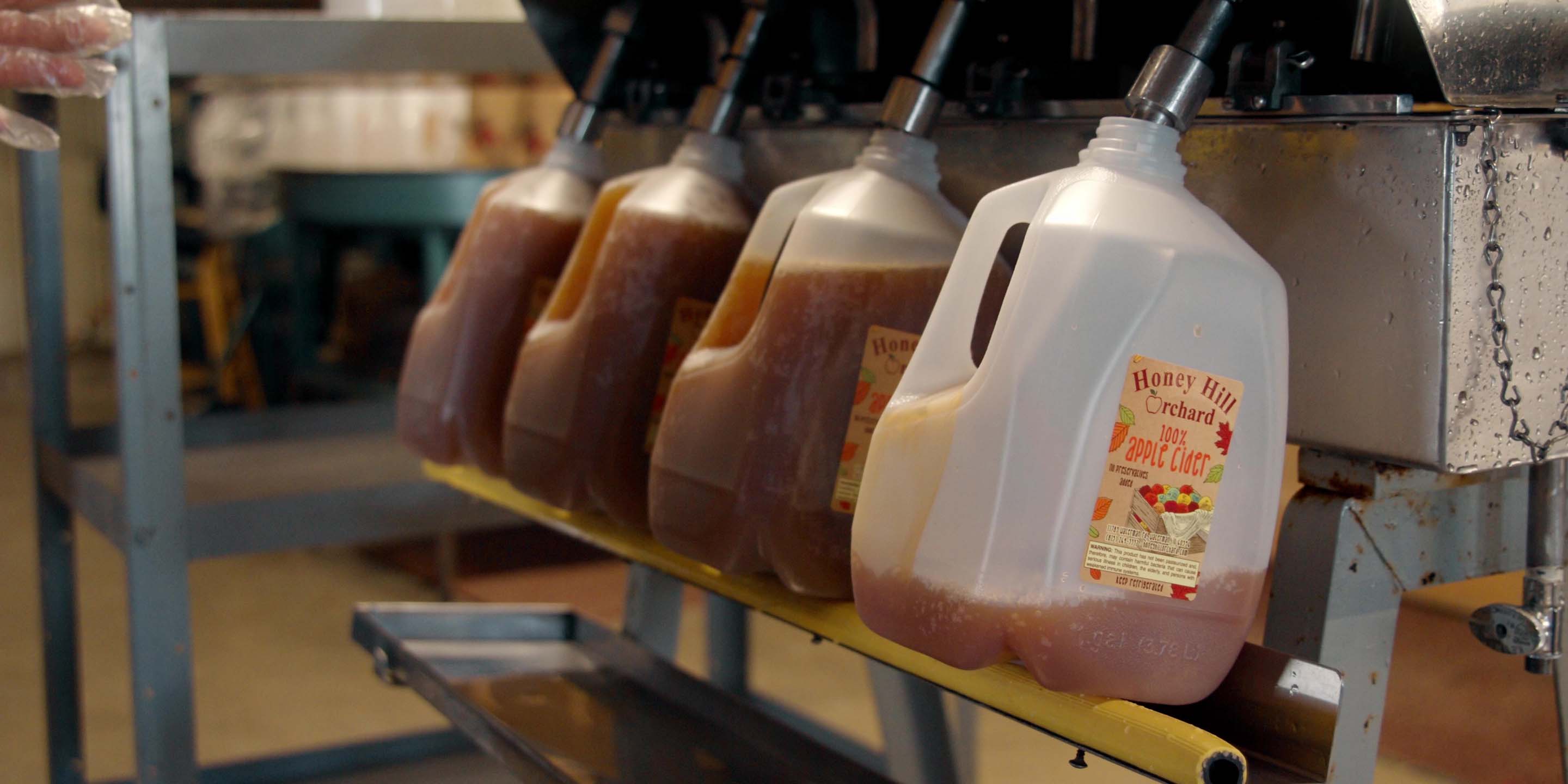

How It's Done:
NEON SIGNS
How It's Done: Apple Cider
By Grainger Editorial Staff 2/16/22
At Honey Hill Orchard in Waterman, Illinois, Shane Richey takes pride in making apple cider that has just the right flavor—not too sweet and not too tart. As farm operation manager, he understands all the work and all the craft that goes into every glass. He gave us a tour of the facility, showed us the press and the bottling equipment, and told us about what it takes to deliver a consistently fresh product that people rave about.
This interview has been edited for clarity.
Starting Clean
Our cider production begins with sanitation. This keeps our equipment clean and functioning, and it keeps our cider as healthy and as good for people as we can make it.
Our sanitization of the equipment includes a spray down with a bleach solution. We spray everything that the apples might touch—the conveyor system, the grinder, the press. We let it sit and then rinse it off well to make sure that we don't get any of those "off" flavors in our cider. We put a lot of emphasis on keeping our equipment clean before and after, always making sure that it gets sanitized properly and rinsed properly before we think about putting good apples through.
On press day I'm usually out early. I begin sanitizing all the equipment at 8 a.m. It takes about an hour of sanitizing, rinsing and set-up before my crew comes in to do the actual pressing.


Not All Apples Are Created Equal
Once we're ready to go, we bring the apples out of the cooler. They need to be good apples.
After apples have been picked, they need to be cooled down right away. Then you go through your apples and grade them. Number ones are perfect—the apples that you put in your store to sell. You can also sell seconds, but those typically have a few blemishes on them, a couple of bruises or stem punctures. Then you also have what we'd call "pressers." There are different grades of pressers.
I like to run seconds through for making my apple cider. The better the apples you can put into your cider, the better your apple cider tastes. So, that's one of the most important things that we strive to do—run good apples through.
I take pride here at Honey Hill in making our cider onsite because I can control the input and the output. I control which apples I'm pressing to try to get the taste that I'm looking for. Apples are not always just tart—some are sweet—and I try to get a nice blend. In the 2021 season, my cider has been on the sweeter side, just due to the growing season here. Even my tart apples have got a nice sweetness to them.
Most of the apples I press are dessert apples. If you get into hard cider production, you're using apples that are considered "spitters," things that you wouldn't really want in a fresh cider. Our cider is mostly dessert apples, sweet eating apples.
Washing and Pressing
We start by running the apples through our conveyor system. They run through the washing plant, which uses brushes and water. After they've been cleaned, they go up the conveyor into the grinding machine that pulverizes the apples and stems and any leaves. Then it goes into a big hopper.


From the hopper, I use a foot-pump pedal that will pump out the apple pomace. Apple pomace is like a juicy mush. We put it onto the rack-and-cloth press, and then we press out the juice. The pulp is then taken to a manure spreader, which we take out to a compost pile on the property.
Our cider process here at Honey Hill is very manual. It's been around for 30 years. While some of the motors and equipment has been updated or replaced, the process is the same. We still have the wood-rack press that pushes down and squeezes the cloths. The process is not new. It's an old process that works for us, but it's a very manual process.


Bottling the Cider
After pressing, the cider gets pumped into the 200-gallon holding tank. It's an old milk tank with a chiller on it, so as soon as that cider is pumped into the holding tank, it's chilled down. There's an auger inside that rotates the cider and keeps it all mixed together.
From the bulk tank, the cider goes into a bottle filler. It's the same kind of setup that was used to fill milk bottles back in the day. You have a siphon-type spigot on it. We can do four jugs at a time. We always put a batch number on each jug that correlates with that day's batch. Once the jugs are full, we put a tamper-proof cap on them, and then they go on the racks and into our cooler to stay cold until we sell them.
Our cider at Honey Hill Orchard is as fresh as we can make it. We press when we need to, and I try to get my numbers right so that we're always offering a very fresh product for our customers.


Running the Numbers
Typically, you'll get about three gallons of cider from a bushel of apples, and a bushel of apples weighs 40 pounds.
On our rack-and-cloth press with three employees, we average about 125 gallons an hour. On a good press day, we'll do anywhere from 400 to 550 gallons for our sales for that weekend.
In a typical season for cider production, we serve cider to thousands of people. In a good year, we could produce about 5,000 gallons of cider.
The Quality of the Cider
Our customers rave about our cider.
We make an unpasteurized cider, which has a different flavor than orchards that pasteurize it either through UV light or heat. People think it tastes fresher—that's the comment we typically get. We put an emphasis on the cleanliness of our room and the cleanliness of the apples I'm pressing, so that we can have a product that's safe to drink.
The amount of time that we spend on it and the quality of the apples that I'm pressing really make our cider stand out.
The information contained in this article is intended for general information purposes only and is based on information available as of the initial date of publication. No representation is made that the information or references are complete or remain current. This article is not a substitute for review of current applicable government regulations, industry standards, or other standards specific to your business and/or activities and should not be construed as legal advice or opinion. Readers with specific questions should refer to the applicable standards or consult with an attorney.






